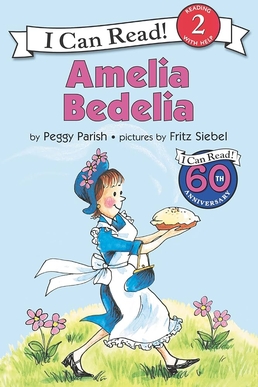Language Arts
Students are in the process of learning the characteristics of poetry and the differences between poetry, narrative and expository writing. Students will learn that poetry has stanzas and lines rather than paragraphs and sentences. Students carry over their understanding of main idea/theme into poetry. As students read poems they come to realize that poets use sequence just like writers do in their writing pieces. Students have the experience to read and discuss various poems. They analyze what the poet is writing about and this leads to a discussion about literal and nonliteral meaning of words. After reading a story about Amelia Bedelia, students recognize that Amelia takes everything people say literally. From this point, students will explore similes, metaphors and personification in poems and analyze them.

The first poems students will write are free verse. Free verse poems are taught by having students write a short paragraph about a topic. Then they break it down by putting slash marks where they want to emphasize important points. Next they write the short phrases in a tower format. After this, they choose only the most important words to create their free verse poem. Below are some examples of free verse poems from this class.
Snakes
by Logan
Snakes SSS!
wiggles
coils
attacks its prey
squeezes
eats it whole
Rabbits
Frogs
and Eggs too
Squeeze!
Squeeze!
Gulp! Gone!
Dogs
by Cassie
Dogs
Fluffy and cute
But can't be mute
Bark like crazy
Pet them
Stop barking
Love dogs
How about you?
Fish
by Mason
Slimey fish
Hard to catch
Beta fish
Rainbow colored
Fun Pets
Then students wrote shape poems. A shape poem is a poem written in the form of the topic. Below is an example of shape poem.
Next students learn to write a haiku. A haiku is a Japanese poem which involves 5 lines. The first line has 5 syllables, the second has 7 syllables, and the last has 5 syllables. Below are some samples of students' work.
Summer
by Siri
Yummy lemonade
Relaxing in the cool pool
Going to the beach
Flowers
by Janani
Different flowers
Roses, orchids, sunflowers
Come at spring and go
Math
In math students are extending their understanding of addition and subtraction by combining numbers in the hundreds to the l,000. Students will be subtracting multiples of l00 and adding multiples of l0 and l00 to and subtracting them from 3 digit numbers. Students will be performing these operations within the context of word problems. Students will continue to use number lines, pictures, and the l00 grid to help visualize these operations.Students start with paper clip problems. The premise is that each box of paper clips contains l00 paper clips. Students are offered different scenarios involving problems with combining boxes of paper clips.
Science
Students are studying plants. They learned the parts of a seed. They compare a dried bean seed and a seed soaked in water for 24 hours. Students are able to take the seed coat off the soaked seed and break it open to find the cotyledon and embryo.
Then they experience planting a fast growing plant called a Brassica plant. Students will observe the plant cycle of this plant. Students are illustrating, writing about what they noticed and measuring the growth of these plants. Then they will make a bee stick and reenact the pollination process using the bee.